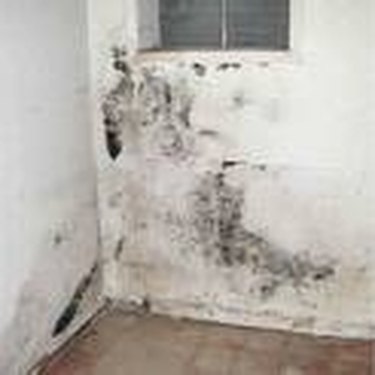
Mold is a toxic, smelly fungus that can lower the value of a house and sicken those exposed to it. Mold can be found in any moist area and grows on floors, walls and ceilings. The National Association of Homebuilders says mold is most likely to grow in the bathroom, basement or kitchen. But no area in the house is immune to mold infestation. Therefore, mold must be dealt with quickly to prevent it from spreading.
Causes
Video of the Day
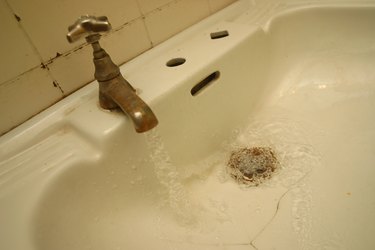
Moisture is the key factor in mold growth. Millions of mold spores are always in the air. They sometimes attach themselves to a surface and form a colony if environmental conditions are right. The colony is commonly known as mold. Unventilated areas of a house with moisture and stale air are breeding grounds for mold. Mold can form in cold temperatures, which is why it can be found in refrigerators. But it prefers temperatures between 40 to 100 degrees.
Video of the Day
Health Concerns
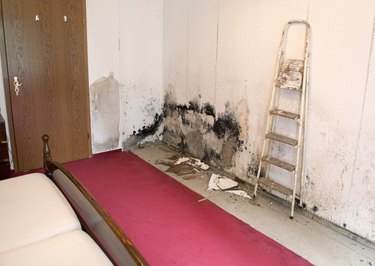
Mold fumes are harmful to breathe and exposure can cause allergies and asthma. That is especially true for people susceptible to those ailments. Mold produces organisms called mycotoxins which can also cause irritation of the eyes, skin, nose throat and lungs. The symptoms can be immediate or appear later. The EPA reports that symptoms beyond these are not likely. Research is ongoing to determine if mold exposure causes other health problems.
Property Value

While mold may not always totally destroy a home's value, it can affect it. A house with a mold problem will probably not sell as quickly or for as much as one without mold. Some real estate agents have said mold could cause a 10-percent drop in the price of a house, according to the Wall Street Journal. Since mold can be removed, it's best to get rid of it before putting the house up for sale.
Removing Mold
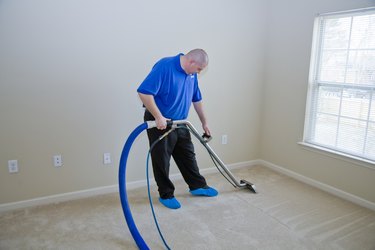
The Environmental Protection Agency recommends scrubbing a moldy surface with detergent and water, then drying it thoroughly. Scrub until there are no more visible signs of the mold. Absorbent materials like ceiling tiles or carpet may have to be thrown away if they are too moldy. Be sure not to paint over moldy surfaces because the paint may peel away. Always wear gloves, goggles and a respirator when removing mold.
Preventing Mold
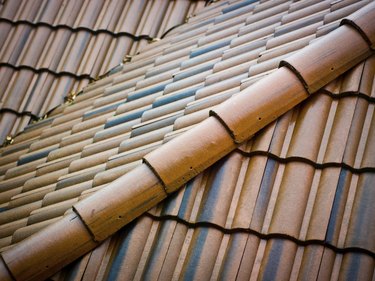
There is no way to prevent the amount of mold spores in the house. But it is possible to control the amount of moisture and lessen the chance of the spores forming colonies. Fix any water leaks and dry water-damaged areas within 24 to 48 hours. Keep the humidity level in the house between 30 and 50 percent. It is also important to keep gutters clean to prevent water from entering through the roof.